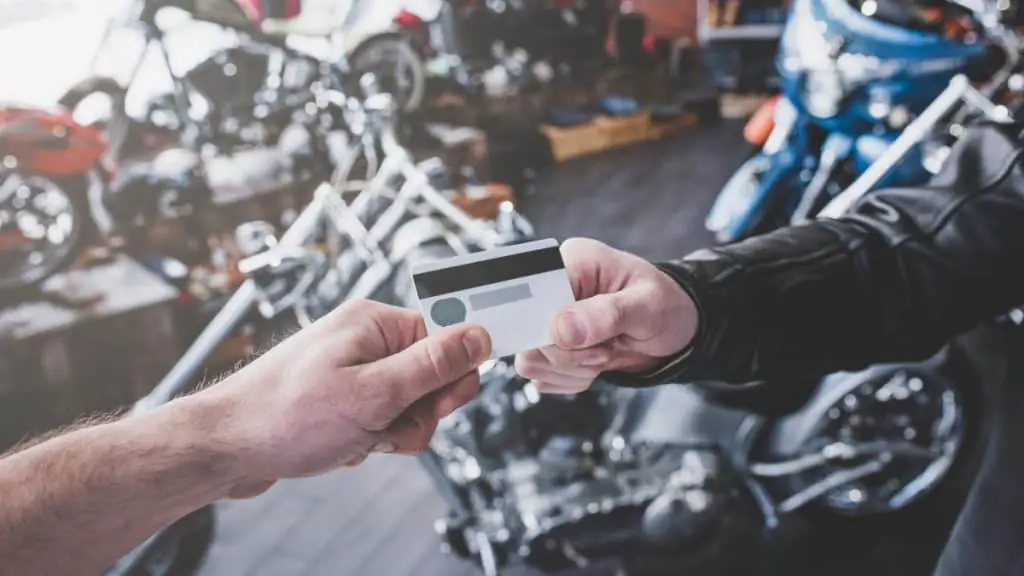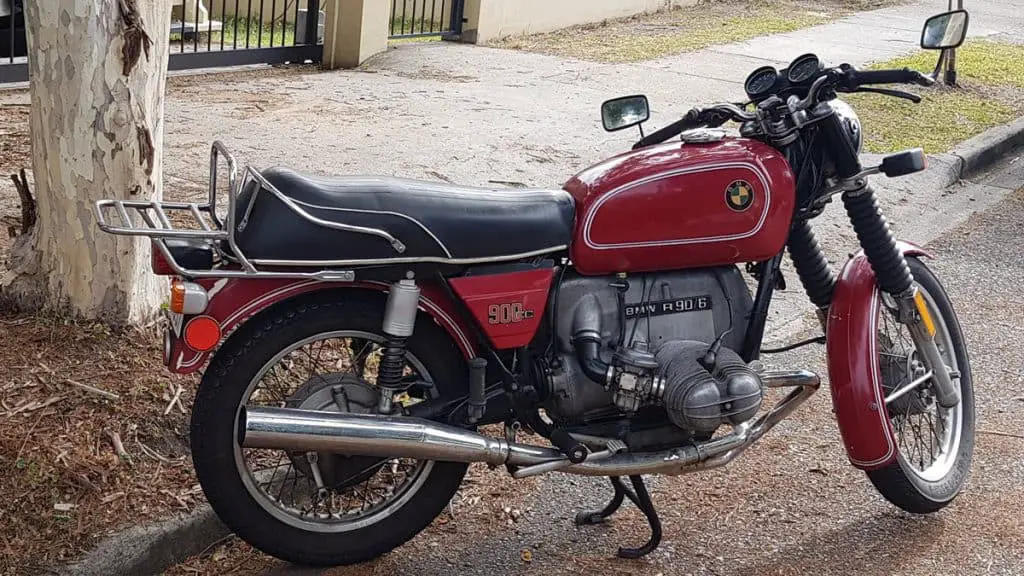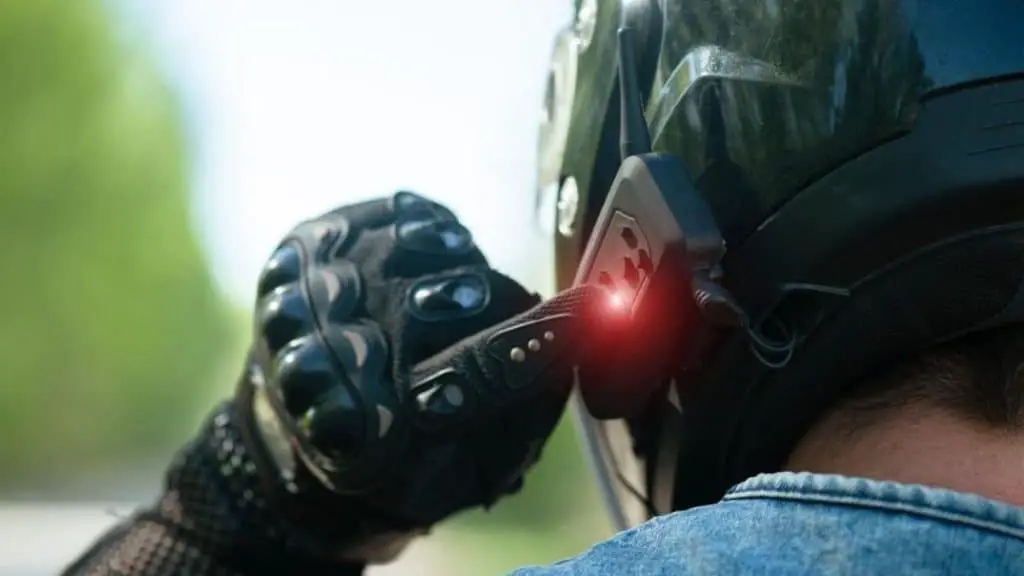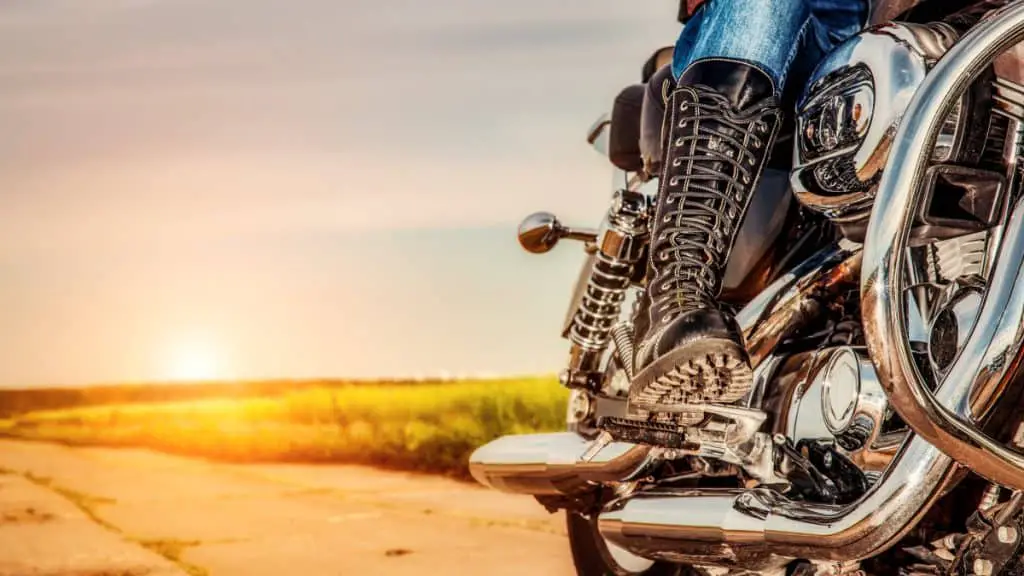Motorcycle Ownership Stats in the US: Who Rides, Why & How
Try to paint a mental image of an average US biker. Chances are, you’ll think of a big, bearded dude wearing leather.
Well, you’re right, but only up to a point. Ask the numbers and they’ll paint a much more nuanced picture.
There’s an old saying: if you torture the numbers long enough, they’ll confess to anything. But when you look at some of the data we have dug out for this article, one thing is clear.
The number of female riders is going up steadily across the US.
But this is not the only interesting finding. Let’s dig a little deeper into all kinds of motorcycle ownership stats and unravel some of the secrets.
Motorcycle Ownership in America: How Many Ride?
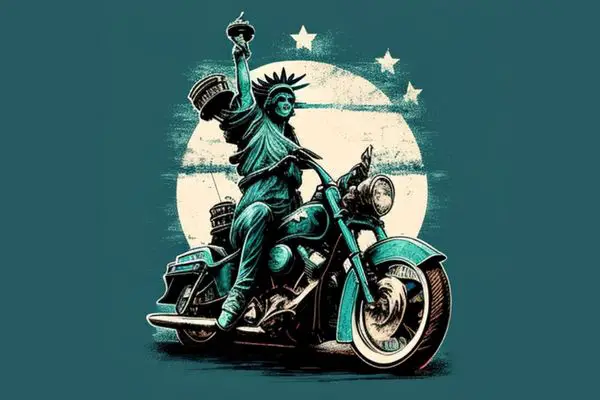
Here’s one of the most common questions: how many motorcycle riders are there in the U.S.?
We can’t be sure of that, as there are plenty of “sleeping license holders” who don’t own a motorcycle. But according to the IIHS data, the total number of registered motorcycles in the U.S. in 2021 was 8,575,569. It showed a slight decline from the previous year, but not enough to ruffle up the trend of a slow but relatively steady growth.
Surprise, surprise.
While Covid-19 led to massive contractions in the economy, it didn’t exactly slash the demand for motorcycles in the US.
Of course, registered bikes going up doesn’t necessarily mean that bike sales are following suit. (As everybody knows who’s ever bought a used bike or whipped up a chopper.) Still, manufacturers didn’t have much reason to complain.
In 2019, the motorcycle industry was still recovering from a prolonged bad patch that started in 2014. However, the numbers shot up to 550K in 2021. The sales numbers for all types of on-road motorcycles in 2021 increased by 14.2%.
The numbers went down slightly to 525k in 2022 with Honda and Harley Davidson in the top spots.
But that’s only the new motorcycle market. Beyond that lies the pre-owned market which has a significant market share. In 2021, half the motorcycles registered were 13 years of age. (And your bike being almost the legal age of a person isn’t always good!)
According to Jim Woodruff, COO of National Powersport Auctions, “The annual pre-owned market is actually three times larger than the new market. Used bikes appeal to many riders because there are so many options in terms of price and style.”
But what lies behind this sales boom? As usual, there is no single factor. First of all, everyone sought as many different ways to avoid public transportation during the pandemic as possible. As far as social distancing is concerned, there’s hardly a better option than riding a two-wheeled metal horse.
The second reason was the need to escape from lockdown fatigue. Riding a motorcycle offered that sense of freedom that people were craving for.
When you take a look at the state level, California, and Florida had the largest number of registered motorcycles in 2021.
And what about electric bikes?
The electric motorcycle market was valued at USD 30 billion in 2022 and the projections indicate that it will shoot up to USD 55 billion by 2032. Hear that rustling? It’s the sound of electric bike manufacturers rubbing their hands at these forecasts.
Who Rides and Why?
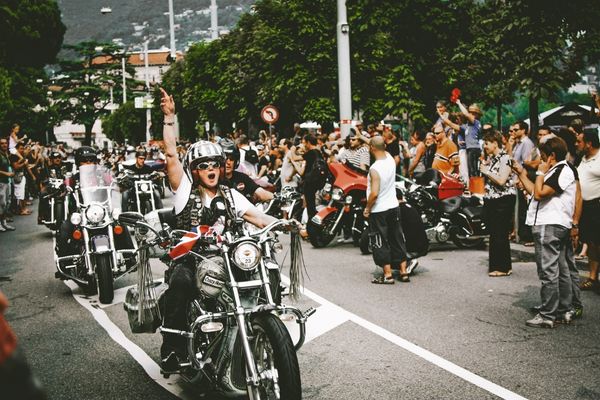
Not that we crunched the numbers, let’s take a deeper look into who these people are.
With all the big bucks being pumped into R&D, what a bike looks or acts like has long become subject to an almost overnight change. But one thing has changed surprisingly little over the past several years: the price.
The average price of a motorcycle has remained super steady since 2014. Honestly, I don’t remember seeing a graph as steady as that one.
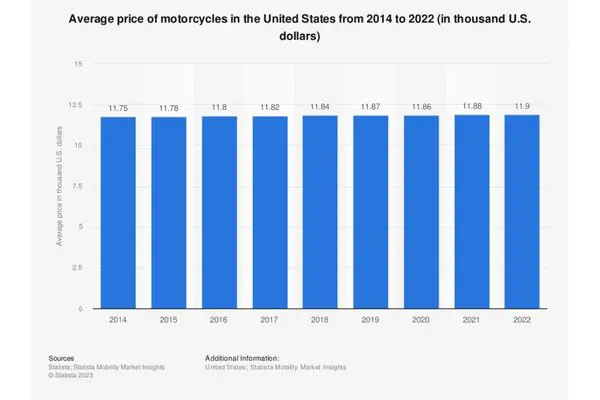
In 2021, the average price of a motorcycle was $12,000. And it’s expected to hover around that number in the coming days too.
The Motorcycle Industry Council (MIC) data of 2018 (see above) reveals that the median age of motorcycle riders in the US is 50. Interestingly, 68% of the riders were married and the median household income was $62,500.
What does that tell us?
If you’ve ever got that feeling that motorbiking is a boomer thing, you’re not very wrong. It seems not many young riders are passionate about motorcycles. In fact, the same survey also shows that only 24 percent of the riders were college graduates!
When it comes to the average motorcycle mileage, the numbers are harder to pin down. The average numbers are around 3,000 miles in a year and not many riders cross over 5,000 miles a year. In fact, a significant percentage of motorcycle owners ride less than 1,000 miles in a year.
Compare that with the sales figures and you will be left wondering why the mileage numbers are so low.
The reality is, motorcycles don’t account for a high percentage of the traffic in most US cities. So many of those millions of motorcycles sold are leading a lonely life and gathering dust in someone’s garage.
The bottom line is this. Motorcycle riding is still an outdoor recreational activity that most people prefer to do in their free time and when they are in the mood.
So, if you’re a motorhead, be ready to lead a lonely social life.
(Big deal! As they always say: “Better to be a nerd than one of the herd.”)
Male to Female Motorcycle Ownership: The Future of Biking is Female?
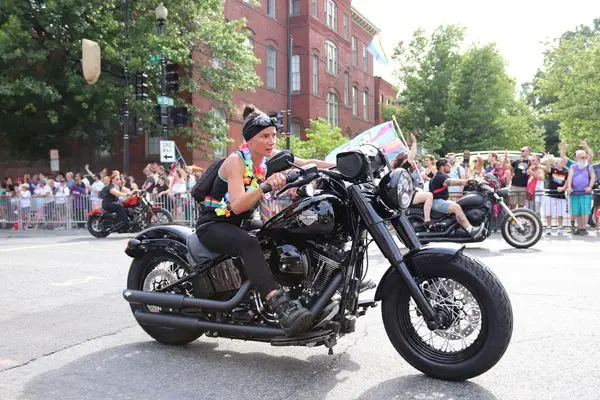
It’s hard to determine whether male or female riders ride their motorcycles the most. But when it comes to female motorcycle rider statistics, there is a significant change.
The numbers given by the MIC from their 2018 owner survey indicate that the number of female motorcycle riders has gone up to 19%. That means at present, one in five motorcycle owners is a woman.
Compare that to the female motorcycle rider statistics 10 years back in 2009, when only 10% of the riders were women. This trend is not just evident in the US. The percentage of female motorcycle riders is rising in the UK too.
And that’s not all.
Women riders are also more educated than their male counterparts. They also tend to spend more money on maintenance and riding accessories.
Also, another set of data tells us that 22 percent of Gen X riders and 26 percent of Gen Y riders are female. When it comes to the type of two-wheelers, cruisers are the favorite choice for women. Scooters are almost at the same popularity level, followed by sports bikes.
It goes without saying that the playing field is far from being level. The struggles that women motorcycle riders faced are largely unknown to motorcyclists. Right from the days of Adeline and Augusta Van Buren in the early 20th century to Elena Myers in the current era, their path has been thorny as hell.
Moreover, motorcycles are mostly designed keeping male psychology, physiology, and anatomy in mind. Since the average height and weight of women is lower than men’s, it is common for them to struggle while handling heavy, cumbersome bikes.
Choosing, say, a motorcycle jacket for women is a no-brainer. But finding a motorcycle that has a manageable weight, center of gravity, dimensions, and handling is way trickier if you aren’t a dude.
The Industry Sees It Too
But a change seems to be around the corner. Some motorcycle brands are considering designing products specific to female riders keeping in mind the market demands. This means more motorcycles with a lower height, lighter weight, and slimmer fuel tanks.
Other options are designing bikes where the seat height can be adjusted and the suspension can be modified depending on the rider’s choice.
Top brands like Harley Davidson have been trying embrace female customers for some time now. Take the Harley Softail Deluxe for example. The low height of the motorbike has made it a popular choice for female riders.
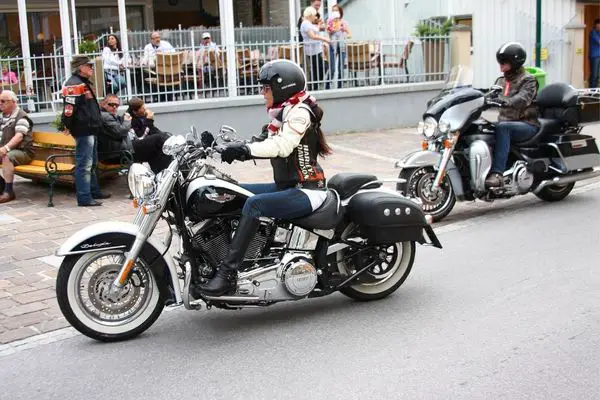
Most importantly, the American motorsports industry seems to have finally understood the importance of catering to women riders. The number of all-female motorcycle clubs is on the rise and they offer great support to new female riders. The Women’s International Motorcycle Association has grown in leaps and bounds in the last few years.
No wonder Indian Motorcycles sponsored the American leg of the Women Riders World Relay in 2019.
As Joey Lindahl, Indian Motorcycle’s customer growth manager, told the NY Times: “A global relay ride is a huge undertaking for anyone, and the fact that it’s a group of female riders just makes it all the more exciting for us.”
Previously, it was hard to imagine a woman in a leadership position in the motorcycle industry. But it’s not so today. Trudy Hardy, a passionate rider, has been the vice president of BMW’s motorcycle division in the US, the BMW Motorrad, since 2019.
Damon Motors, one of the top names in the electric motorcycle arena, have taken steps to promote inclusivity. They have raised the number of women in their motorcycle engineering, design, and marketing team.
Amber Spencer, VP of worldwide marketing at Damon Motors says, “We believe not enough women are represented in motorcycling and we are here to change that—by living it ourselves inside and out.”
Now, bumping up the number of female employees to a bit over 20% will be lauded by some, but others will most certainly say it’s just not enough.
While that’s probably true, one thing can’t be denied. Someone, somewhere has finally acknowledged that women actually can and do ride motorcycles, and not just sit on the pillion holding on to our chest hair.
Hear that thunder? It’s the sound of the 4B biker myth (big, brawny, bearded boys) crumbling into pieces!
Why Are More Women Taking Up Motorcycle Riding?
Instead of answering this question outright, let me counter it with another one: why wouldn’t they?
The fact is, a motorcycle can be as good a friend to a woman as it is to a man. And just like men, women love motorcycling simply because it’s fun.
Reasons are often the same, but women will be readier to admit them. For example, riding can be a source of happiness and a great way to relieve stress. It is also giving women the much desired ‘me’ time and an adrenaline rush to clear the brain. So, defiantly named events like the “Babes Ride Out” in California are steadily gaining popularity.
And the best part isn’t just about women. Motorcycle riding can help a person overcome the tragedies that life brings forth. Take the case of Marjorie White for example. She started riding at the age of 58, six months after her 25-year-old son died in a motorcycle crash.
“Riding helped me feel alive, to find joy again. It’s meditative, confidence-building, and inspiring,” she told Travel + Leisure.
Motorcycle Injuries and Fatalities Stats: Comparison Between the Sexes
Let me start with a bang! Women motorcycle riders pay more attention to safety than men.
Before you roll your eyes, let’s take a look at a set of data from a 2020 study by the Insurance Institute for Highway Safety.
The total number of motorcycle fatalities in the US in 2020 was 5,579. Of these numbers, a whopping 92% were males. And the majority of the deceased males were drivers.
Here’s the thing.
The majority of the (61%) female motorcyclists who died in crashes in 2020 were passengers. But when they were controlling the bike, female riders add up to only 8% of the total fatalities.
Obviously, this data has to be viewed from every angle. Since the number of male motorcyclists is much higher, it’s expected that the number of male fatalities will be bigger too.
On the plus side, along with the rise in sales, the demand for riding training and education has also risen in the past years. The MIC data reveals that the number of enrollments in the Motorcycle Safety Foundation increased by 48% in 2021.
The MIC data also indicate that women riders are more oriented towards safety than their male counterparts. Around 60% of female riders took motorcycle safety courses, as opposed to only 42% of the men.
But let’s keep the statistics aside for a while. This is what Leslie Porterfield, holder of three land-speed records, says about female riders. “I think we just react better than men like when things go wrong while motorcycling. I think we have seen some great female riders who are great level-heads,” she told the FinancialExpress.com.
This may or may not stand as a rule. But the fact is, there are plenty of women riders who know their motorbikes better than men.
Interestingly, studies also reveal that injury patterns related to motorcycle crashes vary between the sexes. In general, a high percentage of female motorcycle riders suffer less severe injuries and the injuries were mostly on the extremities.
Compared to male riders, women suffered fewer injuries to the head, neck, and face areas. This also resulted in the fact that a smaller number of female motorcycle riders were admitted to the ICU. Those with conditions serious enough to get admitted to the ICU, spend relatively less time than the male riders.
What is it you say? Women have this little air of mystery around them…
Not really. Chances are, this is related to the high probability of male riders engaging in risky behaviors like alcohol intoxication and not wearing a helmet.
Final Thoughts
Before all these motorcycle ownership statistics start making your head swim, let’s get to the point.
Most importantly, the male-dominated landscape of motorcycling is about to undergo a transformation in the coming days. The age-old concept of ‘Girls don’t ride Motorcycles” is breaking down.
And brands are starting to realize the fact that women riders make up one of the fastest-growing segments in the industry.
Other than that, with the projections looking good, the motorcycle industry is heading toward some exciting times. By using advanced technologies and keeping an eye on electric motorcycles as the path to the future, brands are also embracing sustainability.
So, stick around and who knows, you might find ‘hover bikes’ defying gravity on the streets within a few decades.


